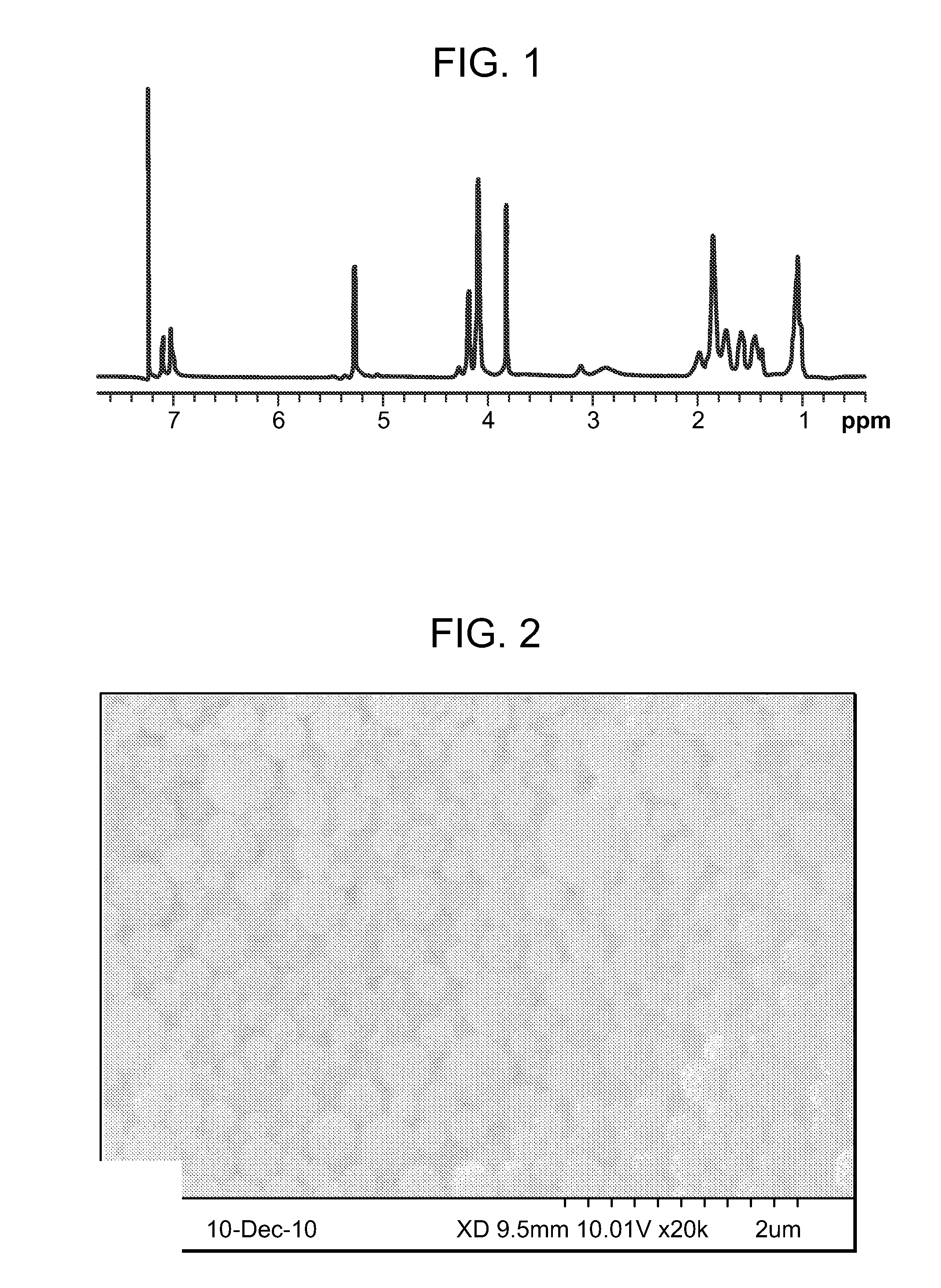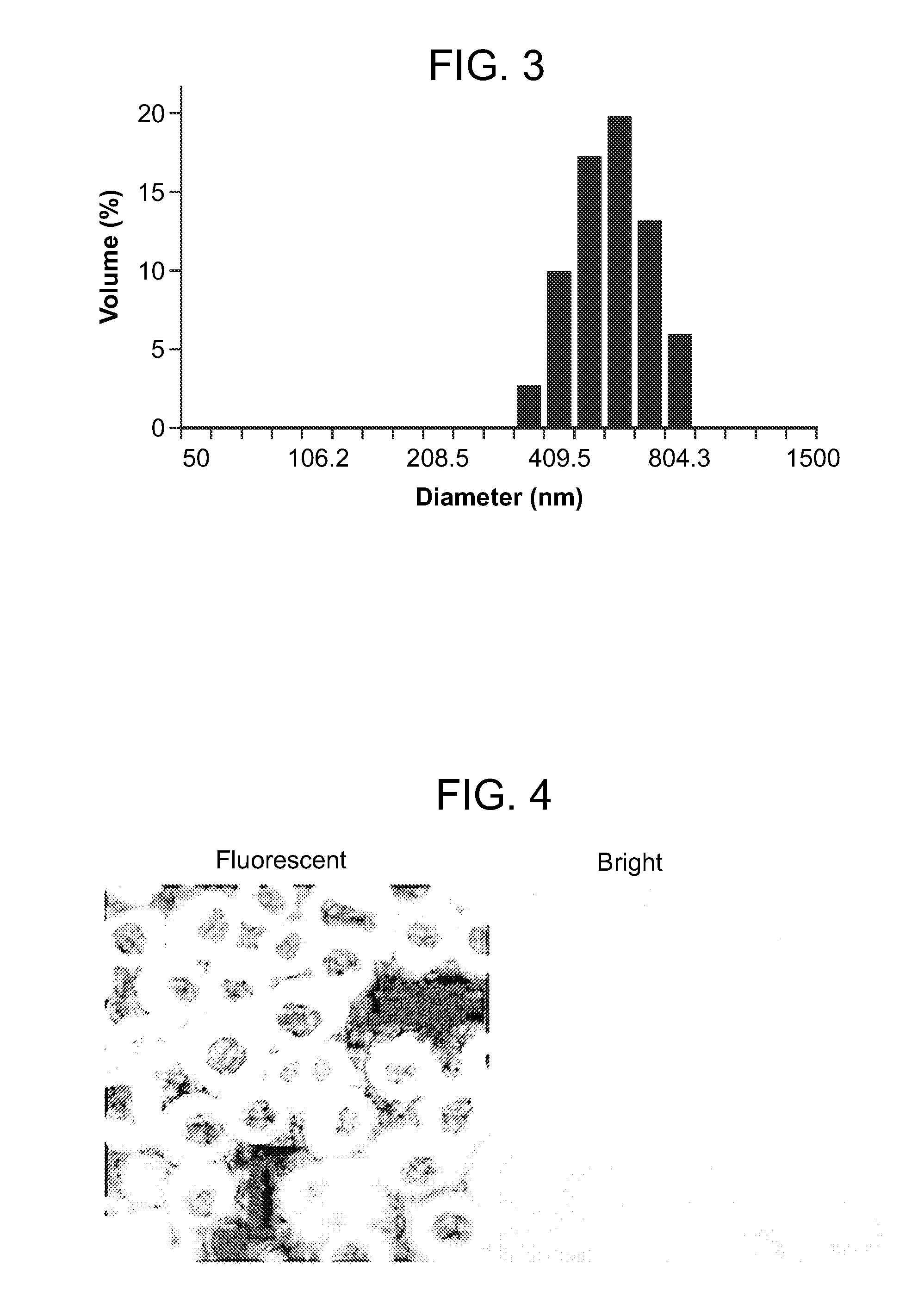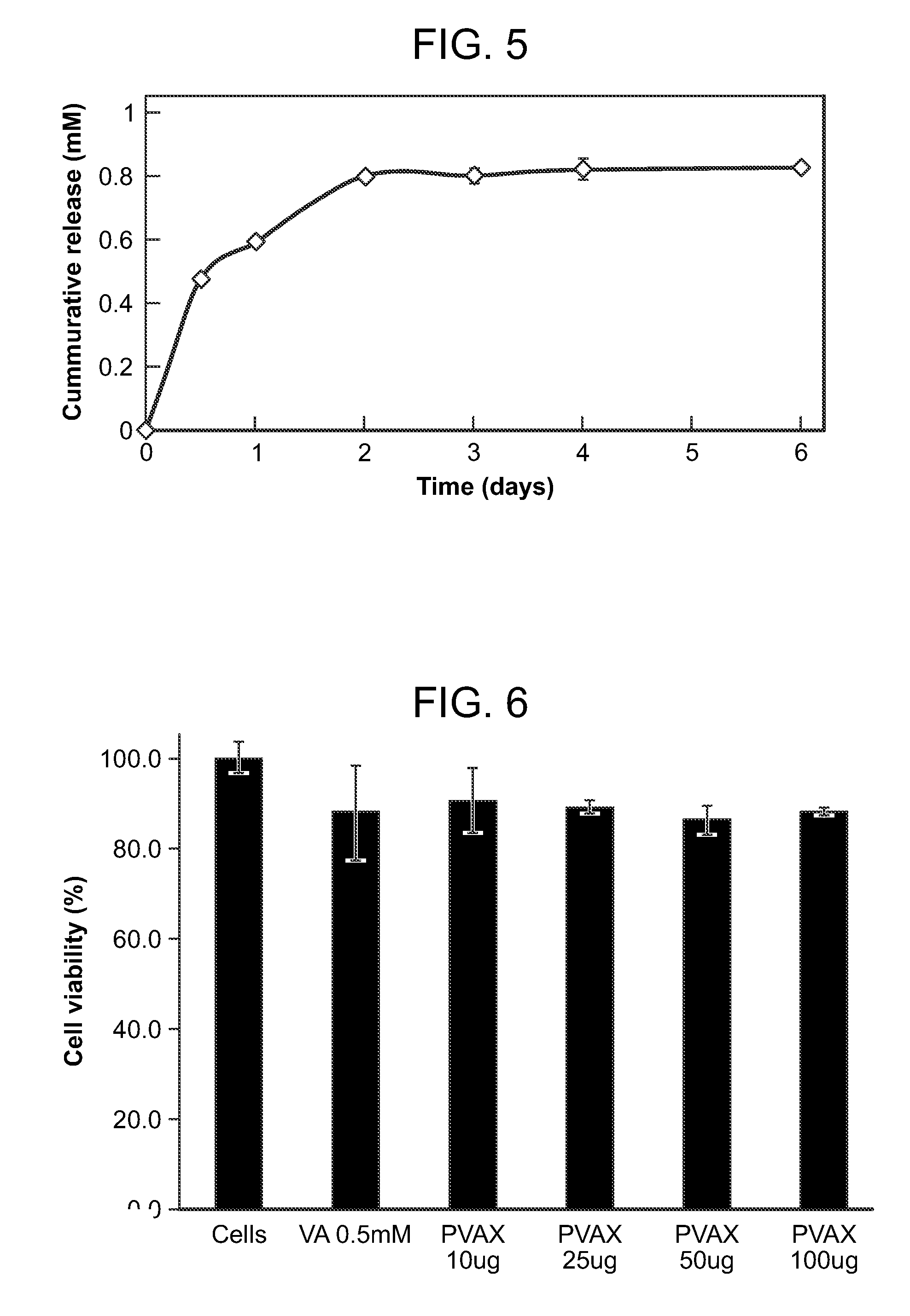Pvax copolymer and pvax microparticles comprising the same
a technology of pvax and copolymer, applied in the field of tissue engineering, can solve the problems of insufficient mechanical properties of natural polymers, inducing immune responses, and synthetic polymers not adhering well to cells
- Summary
- Abstract
- Description
- Claims
- Application Information
AI Technical Summary
Benefits of technology
Problems solved by technology
Method used
Image
Examples
example 1
Preparation of PVAX Copolymer
[0162]1,4-cyclohexanedimethanol (approximately 10.98 mmol) and vanillyl alcohol (approximately 16.47 mmol) were dissolved in 20 mL of dry tetrahydrofuran (THF) under a nitrogen atmosphere, and triethylamine (60 mmol) was added thereto at 4° C., Herein, the amount of vanillyl alcohol in the mixture was 60% on a molar basis. To the mixture, 25 ml of a solution of oxalyl chloride (approximately 27.45 mmol) in dry THF was added dropwise at 4° C. The reaction mixture was maintained at room temperature in a nitrogen atmosphere for 6 hours, and the synthesized polymer was extracted with dichloromethane and then precipitated in cold hexane, thereby generating a PVAX copolymer.
[0163]The chemical structure of the PVAX copolymer was analyzed using 1H NMR spectrometry, and the molecular weight of the PVAX copolymer was analyzed by gel permeation chromatography (GPC). FIG. 1 illustrates the results of the 1H NMR analysis. The results of the gel permeation chromatogra...
example 2
Preparation of PVAX Microparticles
[0164]PVAX microparticles were prepared from the PVAX copolymer prepared in Example 1. Specifically, to a solution of 50 mg of the PVAX copolymer in 500 μL of DCM, 5 mL of 10 (w / v) % poly(vinyl alcohol) solution was added. The reaction mixture was sonicated using a sonicator (Fisher Scientific, Sonic Dismembrator 500) for 30 seconds and homogenized (PRO Scientific, PRO 200-homogenizer) for 2 minutes to form a purified oil / water emulsion, 20 mL of PVA w / w %) solution was added to the emulsion, which was then homogenized for 1 minute. The resulting solution was evaporated using a rotary evaporator to remove the remaining solvent, followed by centrifugation at 4° C. and 11,000 rpm for 5 minutes, thereby obtaining PVAX microparticles. The PVAX microparticles were washed twice with deionized water and used in subsequent tests.
example 3
Properties of PVAX Microparticles
Physical Properties
[0165]The shape and size of the PVAX microparticles prepared in Example 2 were evaluated. The shape of the PVAX microparticles was studied with a scanning electron microscope (SEM) (S-3000N, Hitachi, Japan), and the diameter of the microparticles was measured with a particle size analyzer (ELS-8000, Photal Otsuka Electronics, Japan). The results of the measurement, illustrated in FIGS. 2-3, indicated that the PVAX microparticles were round spheres having an average diameter of about 500 nm.
Intracellular Absorption
[0166]In order to examine the intracellular absorption of the PVAX microparticles prepared in Example 2, the following test was carried out using macrophages known to phagocytose foreign matter having a size of 0.5-3 μm.
[0167]RAW 264.7 cells were incubated with coumarin-conjugated PVAX microparticles for 1 hour, and then observed with a confocal laser scanning microscope. As illustrated in FIG. 4, the macrophages showed th...
PUM
| Property | Measurement | Unit |
|---|---|---|
| Mass | aaaaa | aaaaa |
| Diameter | aaaaa | aaaaa |
| Diameter | aaaaa | aaaaa |
Abstract
Description
Claims
Application Information
 Login to View More
Login to View More - R&D
- Intellectual Property
- Life Sciences
- Materials
- Tech Scout
- Unparalleled Data Quality
- Higher Quality Content
- 60% Fewer Hallucinations
Browse by: Latest US Patents, China's latest patents, Technical Efficacy Thesaurus, Application Domain, Technology Topic, Popular Technical Reports.
© 2025 PatSnap. All rights reserved.Legal|Privacy policy|Modern Slavery Act Transparency Statement|Sitemap|About US| Contact US: help@patsnap.com



